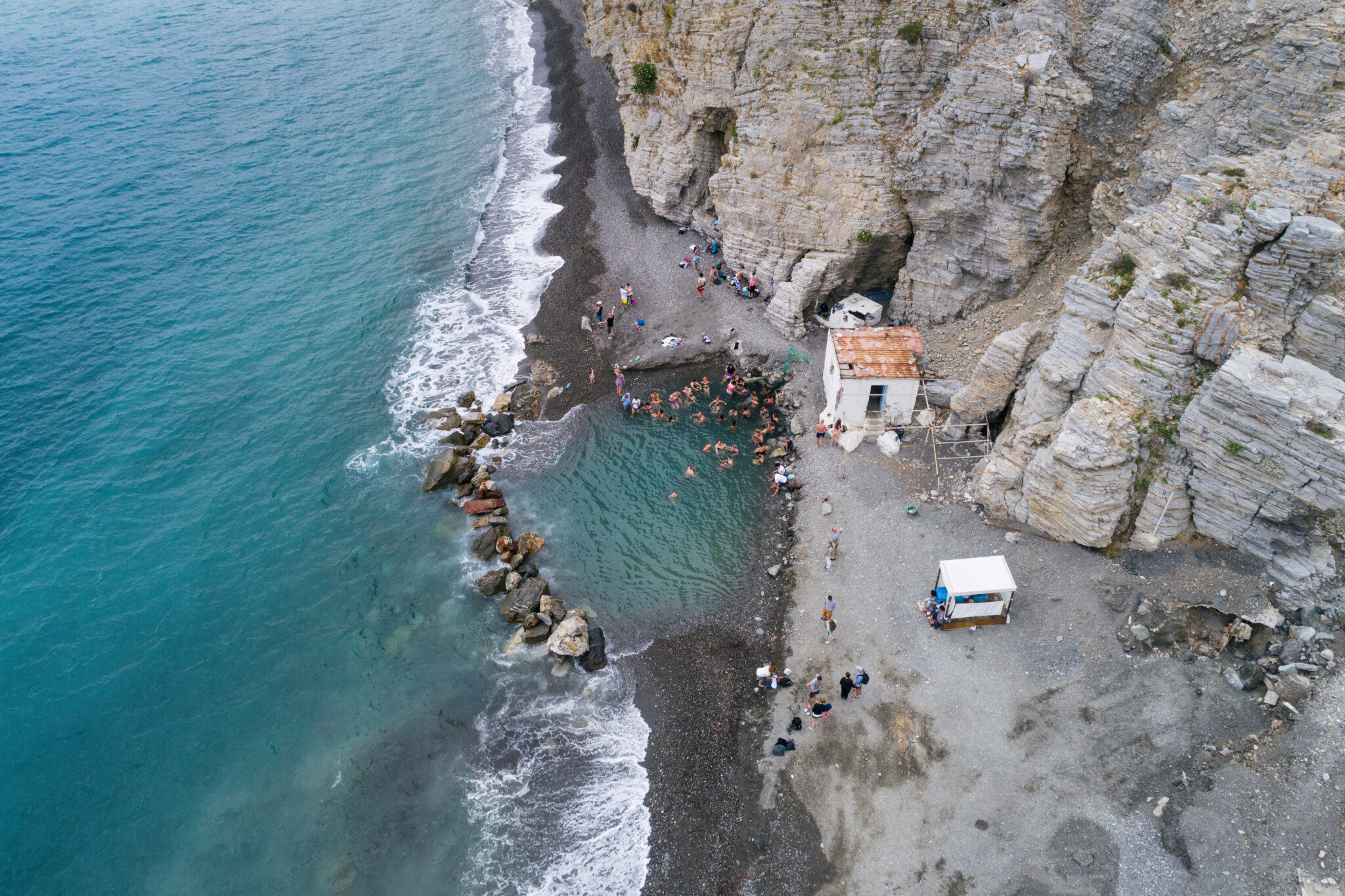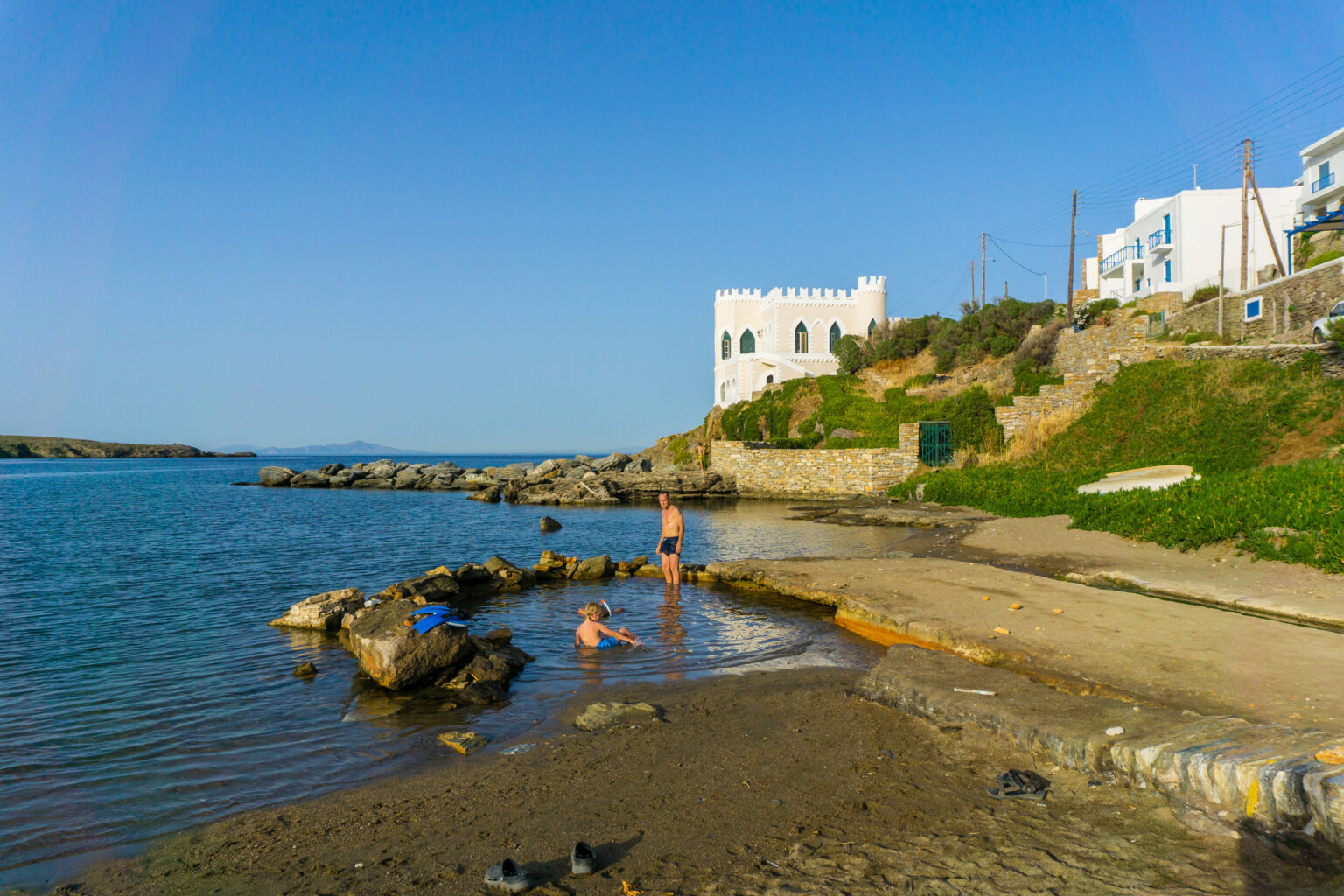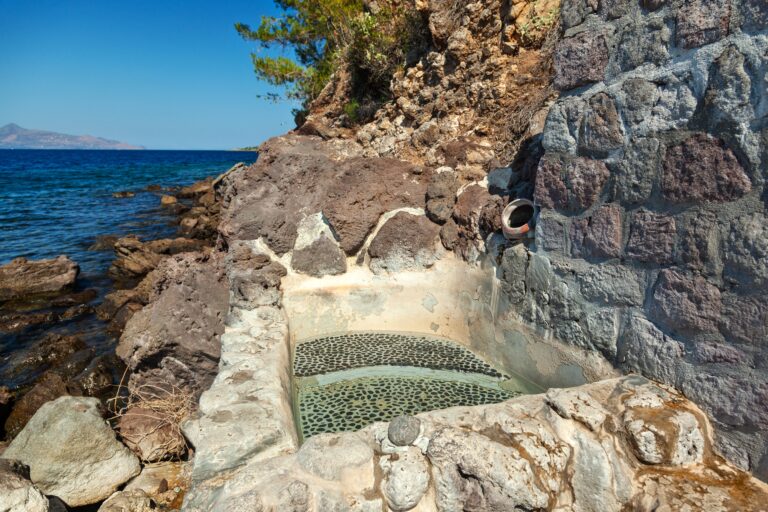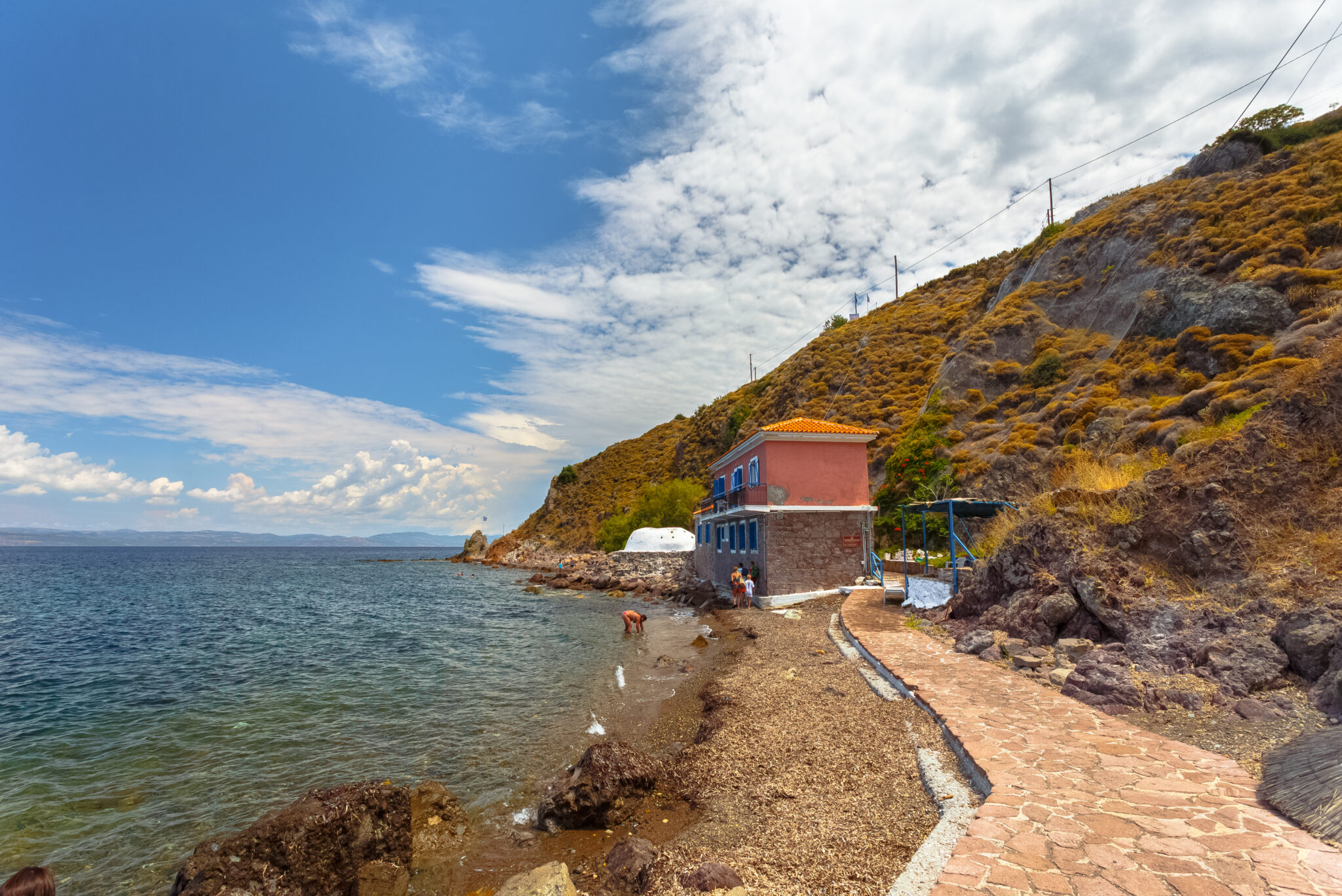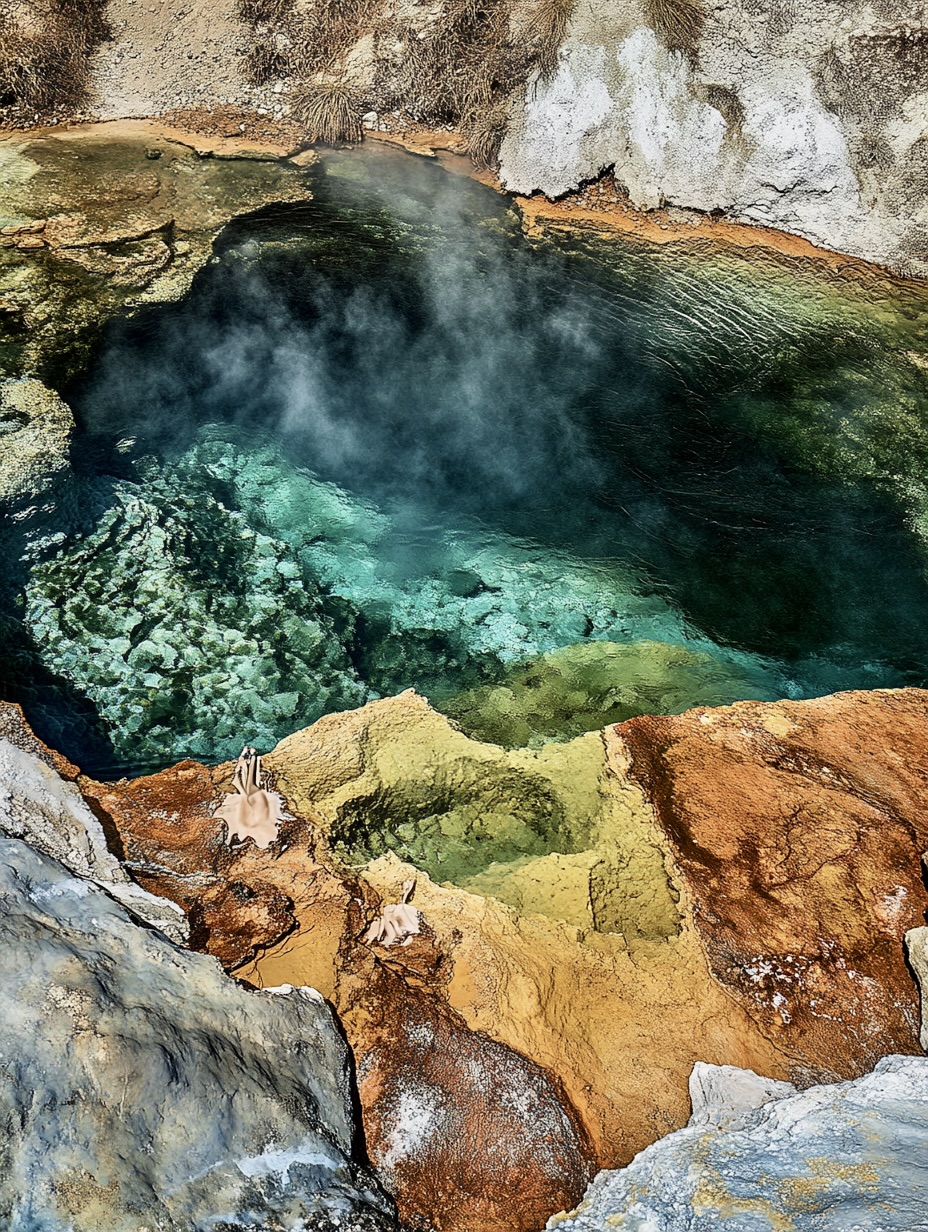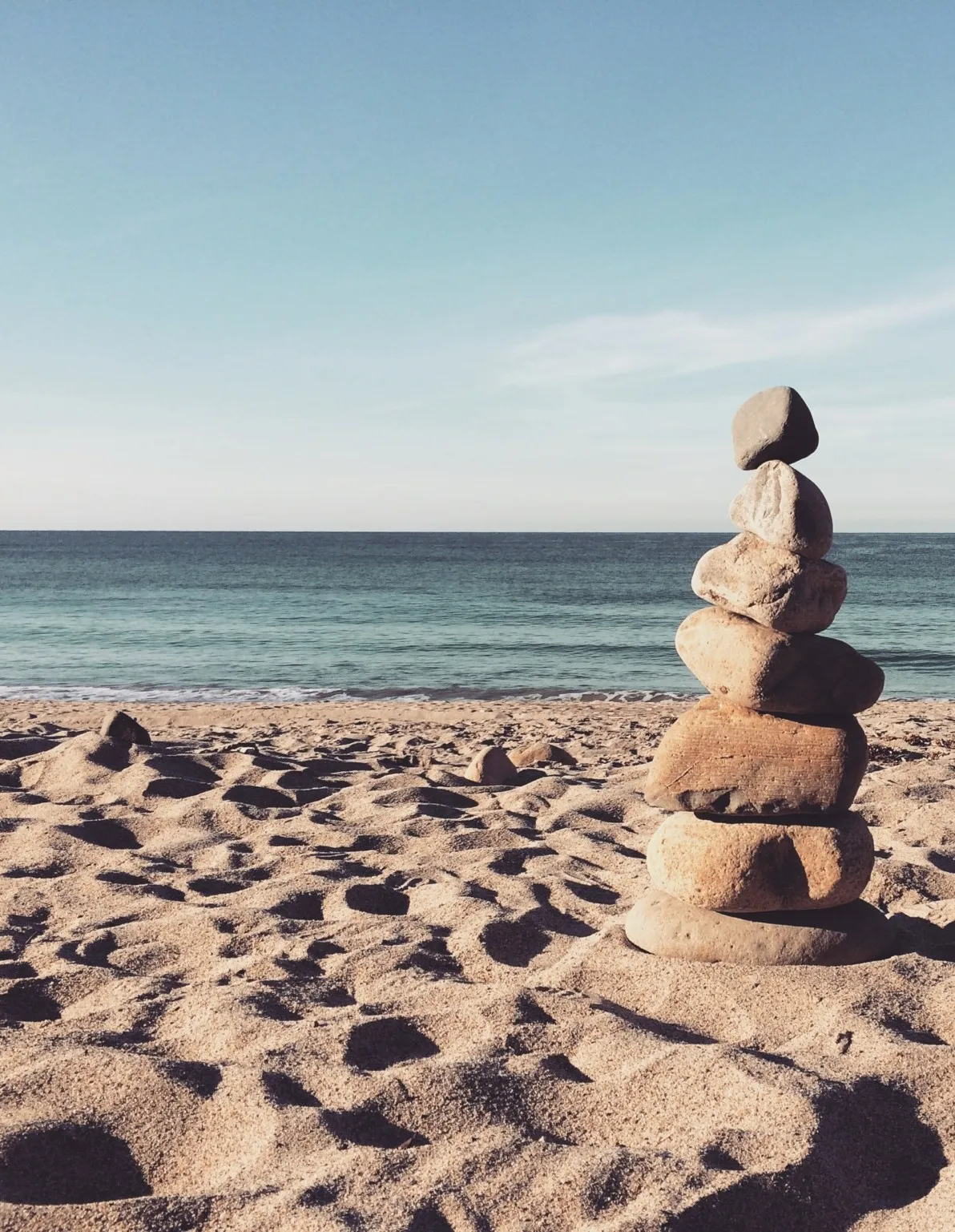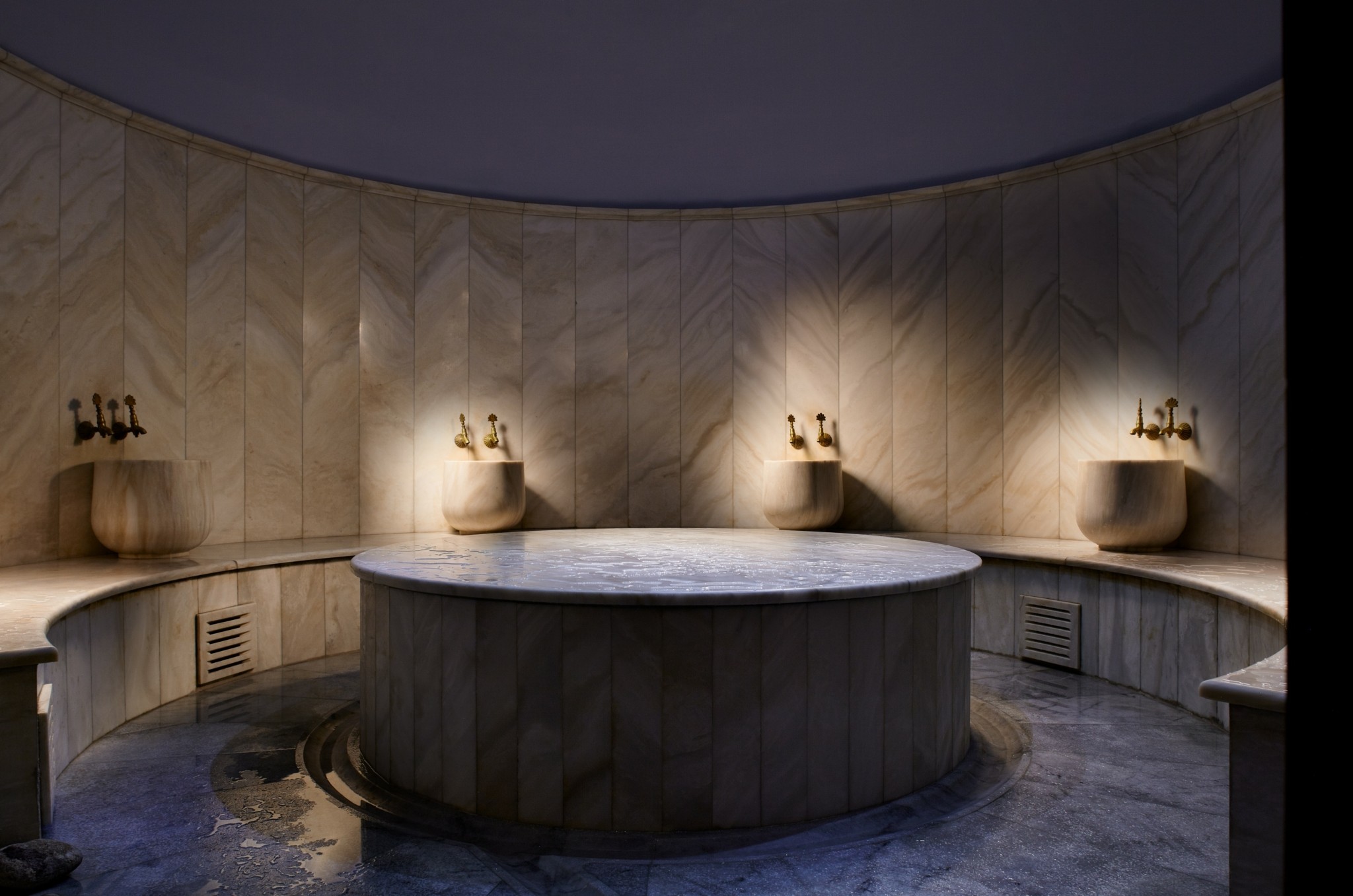Across Greece, hot springs burble into the sea, turning ordinary swims into something altogether more elemental: a baptism in mineral-rich warmth where the Aegean exhales steam and salt in the same breath. It’s a spa without turnstiles – open-air, democratic, and improbably glamorous – where the price of admission is a towel and a tolerant sense of wonder.
Since antiquity, philosophers and physicians have praised these waters for their curative gifts. Today, they slip into the landscape with a casual elegance: sometimes corralled by low rings of volcanic rock, sometimes threading straight into a scalloped cove, their heat feathering into the surf as the tide rolls in. You linger until dusk, shoulders unspooling, the sea cooling your face while the earth warms your bones.
Here, along the edges of islands and quiet peninsulas, are some of the most memorable seaside thermal baths – places where nature does the design, and time slows to a mineral-rich drip.
Therma Beach, Kos
On the island’s southeast coast, 12 kilometers from the town of Kos, a steep path leads to this rugged cove. No golden sand here—just dark pebbles and sheer cliffs, with hot water rising directly into the sea at 30–50°Celsius. Locals have ringed off a pool with stones so bathers can soak where the sea and springs meet, to make the most of the experience.
Loutra, Kythnos
Kythnos, long called Thermia, has been famed for its hot springs since antiquity. In the village of Loutra, the Agioi Anargyroi spring (36°C, saline) is considered beneficial for arthritis, while the Kakavos spring (52°C, rich in bromide and iodine) was once a royal favorite—King Otto and Queen Amalia even commissioned a neoclassical bathhouse by Theophil Hansen. Today, warm water still flows into the bay, where a stone pool by the jetty offers a free natural soak.
Edipsos, Evia
Edipsos is Greece’s best-known spa town, with more than 80 springs scattered between the town, Yialtra, and Ilia. Waters gush hot beneath the seafront, especially under the old school and town hall, where bathers slip into pools carved into the rocks. Modern spa hotels offer curated therapies, but the free outdoor springs—rich in trace minerals—remain a communal favorite.
Methana, Peloponnese
Opposite Aegina, the volcanic peninsula of Methana has been famed for healing waters since Pausanias described them in the 2nd century AD. The “Baths of Pausanias” at Agios Nikolaos still exist: a rocky basin by the sea, fed by hot water (30–33°C) released at the press of a button in a tiny stone hut. The springs are thought to ease rheumatism, respiratory troubles, and chronic fatigue.
Agios Kirykos, Ikaria
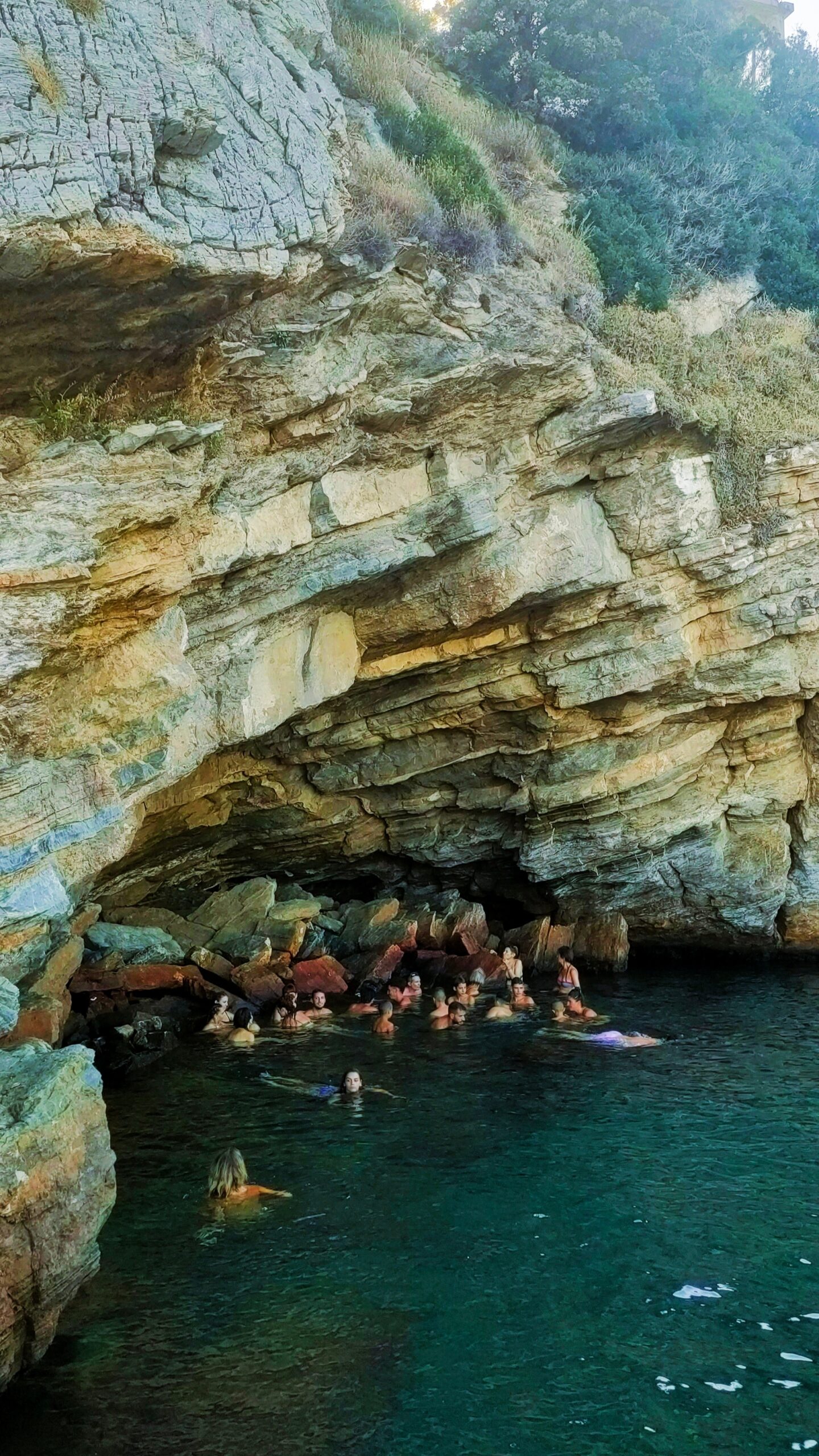
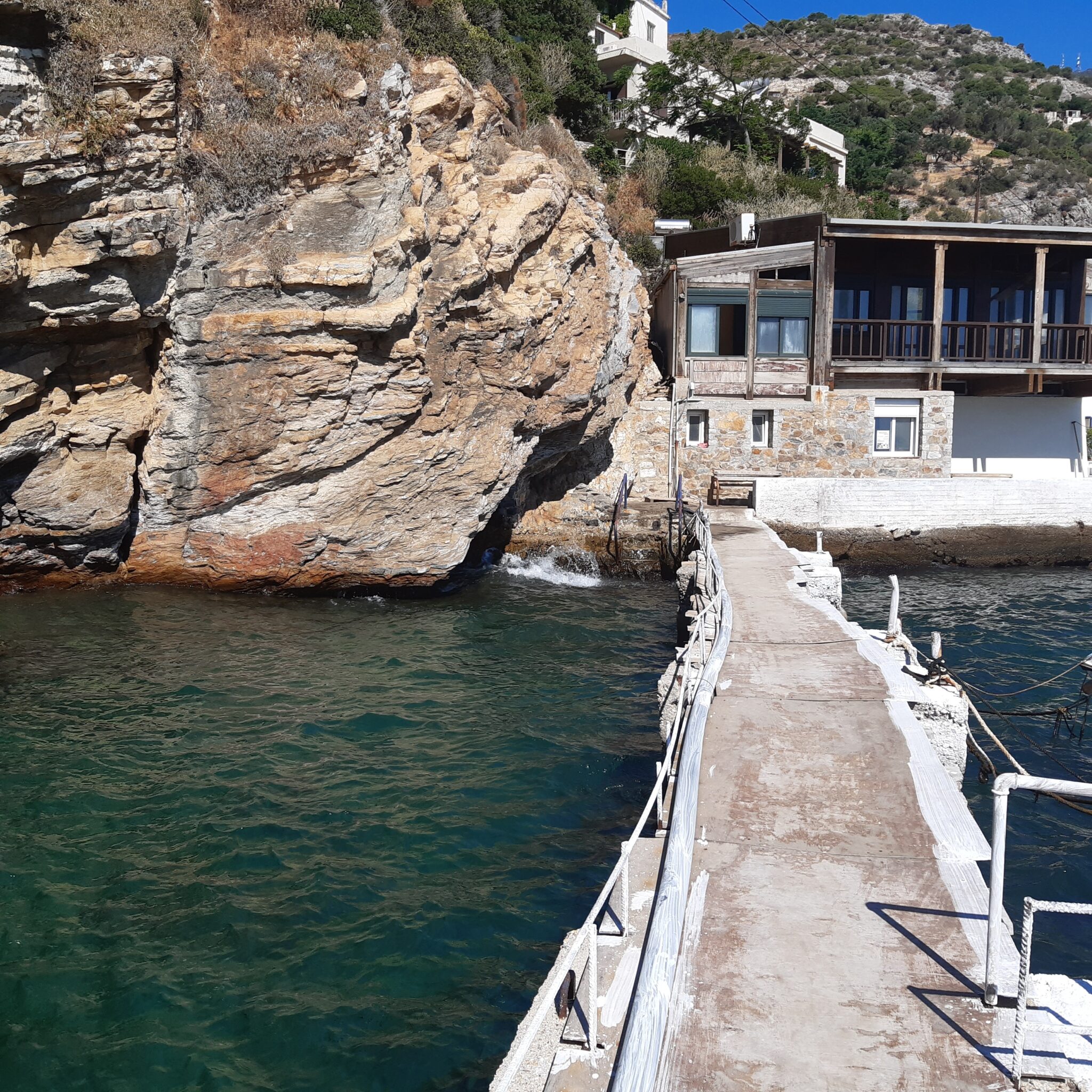
In one of the world’s “Blue Zones,” Ikaria’s thermal waters add another secret to longevity. At Therma beach, near Agios Kirykos, steaming water rises from the seabed and mingles with the Aegean. A cave-like hollow at the shore concentrates the warmth—arrive early to claim a spot. Another spring flows into the sand at Agia Kyriaki, beside the tiny chapel near the airport.
Eftalou, Lesvos
Just north of Molyvos, the Eftalou baths have drawn visitors for centuries. Here, steaming waters (43–46°C) gush from beneath volcanic rock and are guided into a stone bathhouse that stands almost on the shoreline. After soaking in the vaulted chamber, many step directly into the sea, alternating heat with the Aegean’s cool waves—a ritual prized for easing rheumatism and skin ailments.




